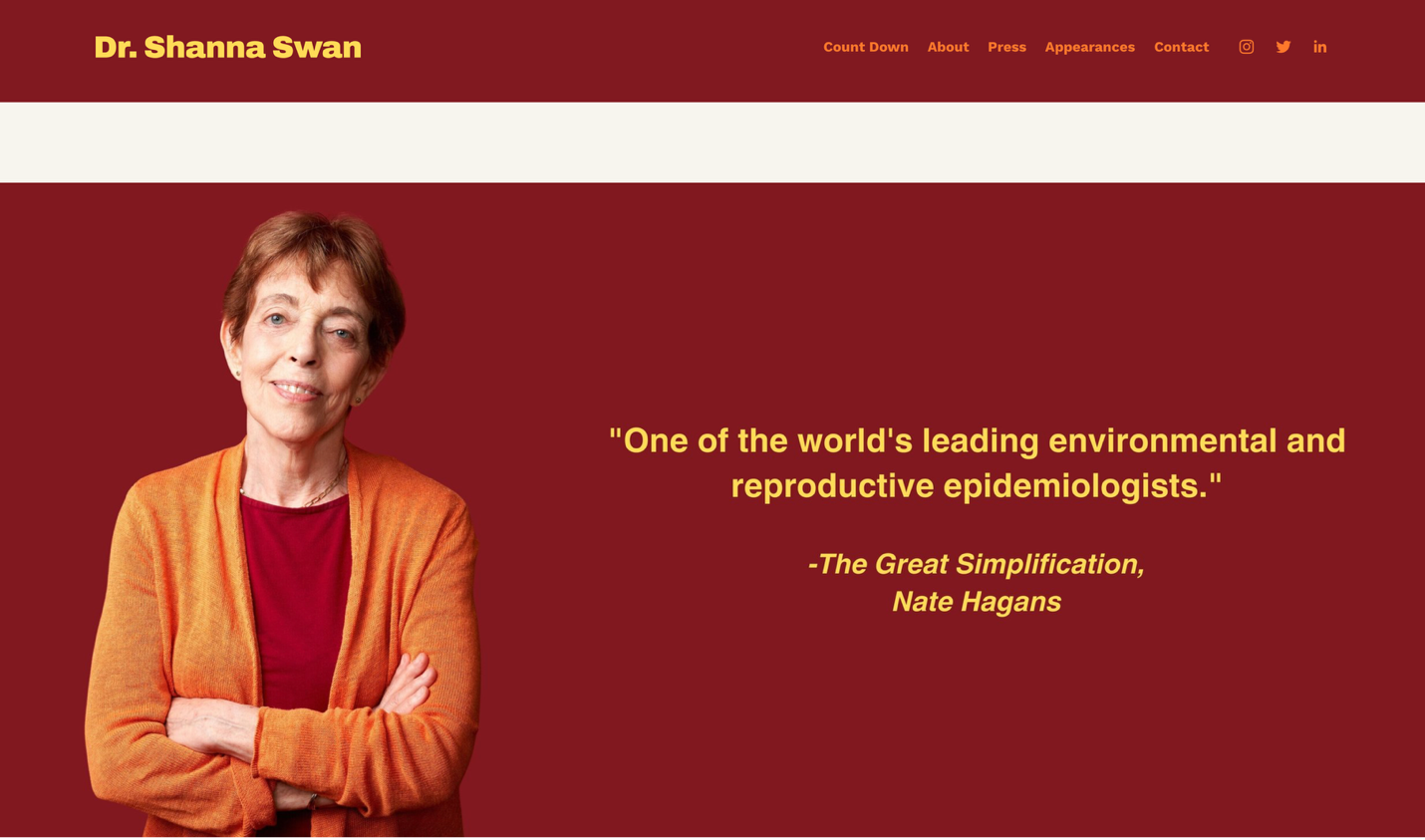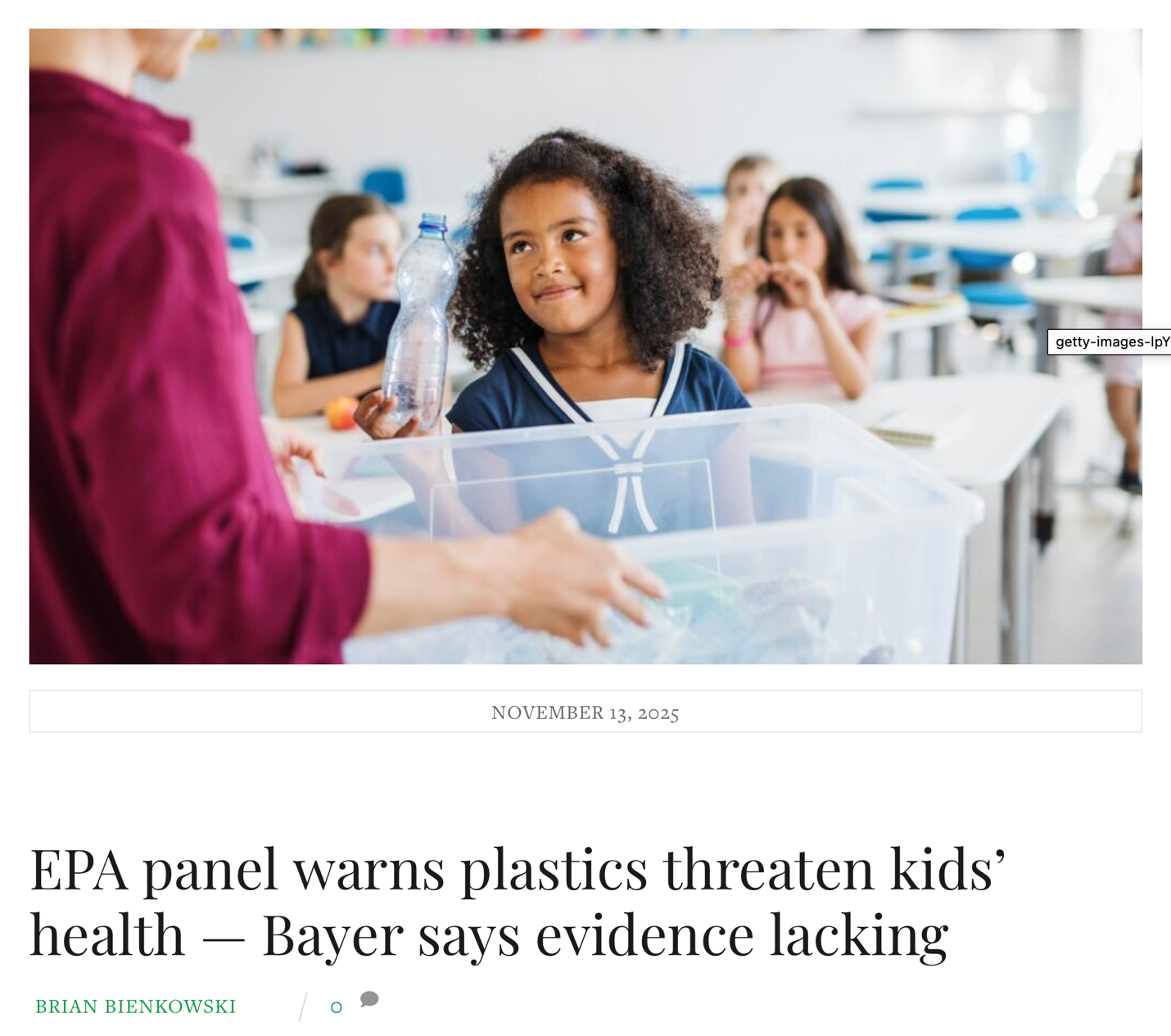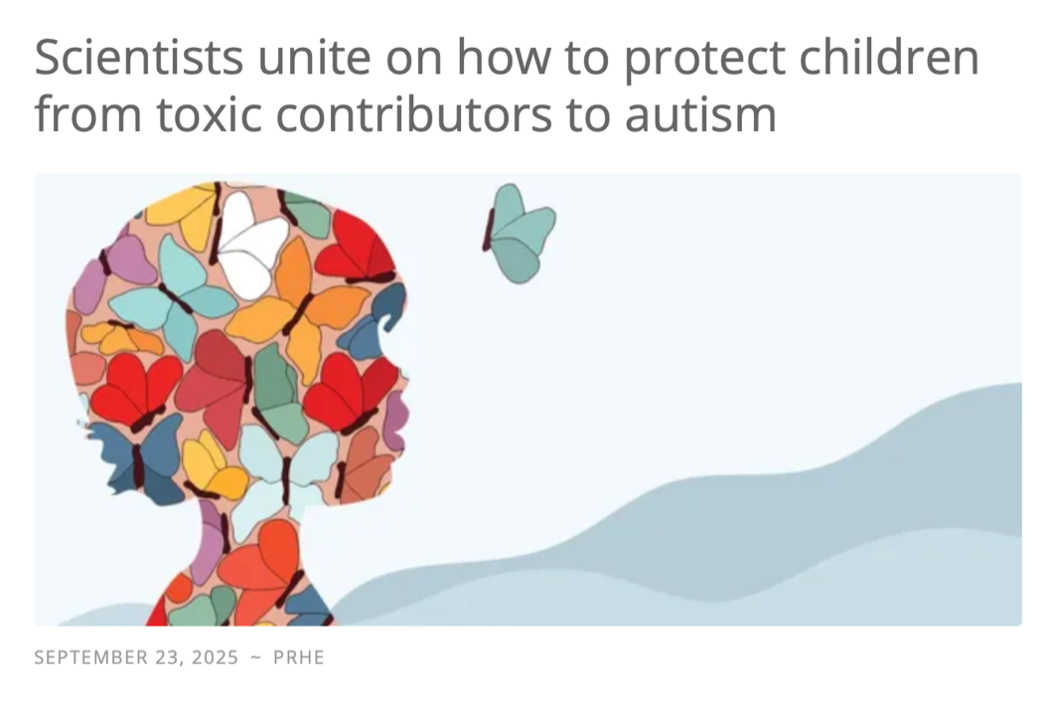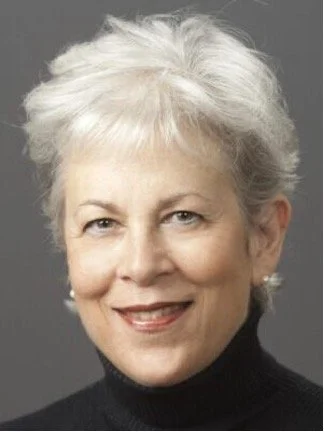INTERVIEW Leyla Erk McCurdy, October 6, 2023
For five years now, I have been serving on the American Public Health Association (APHA’s) Children’s Environmental Health Committee under the leadership of Leyla Erk McCurdy, MPhil. Leyla is a longtime mover, shaker, connector, and founder in the world of Children’s Environmental Health (CEH). Her credentials are too numerous to list, but she has over twenty-five years of experience in public health and the environment, and has developed pivotal documents and initiatives for APHA, the National Environmental Education Foundation (NEEF), and the American Lung Association (ALA). She has been instrumental in creating thousands of environmental health champions and developing model environmental health interventions that have been successfully implemented in numerous communities. She has served on the Children’s Environmental Health Advisory Committee (CHPAC) to the EPA and kindly nominated me to the position in turn. She is chair of the Executive Committee for Climate for Health at ecoAmerica and is on the Board of the Children’s Environmental Health Network (CEHN). She also serves on expert committees, including the America Public Health Association’s Center for Climate, Health and Equity Advisory Board, and she has been generous in bringing me and many other environmental champions into the public health fold. I had the privilege of speaking with her one-on-one just this month. This text has been edited for length and clarity.
JMK: Leyla, thank you so much for taking the time to talk with me. My first question is, what first prompted your interest in the health effects of environmental chemical exposures? Is there some story from your childhood or early training about how you got interested?
LEM: Thank you, Jean-Marie. My story is not very typical, which speaks to the fact that we can engage people with untraditional backgrounds in our efforts to protect children. I grew up in Turkey in a community where respecting and caring for others, as well as the environment, were core values. This upbringing also instilled in me a natural commitment for justice and equity issues. Even though we weren’t wealthy, I was able to go to the best schools, so I got an amazing education. I went to a very prestigious American High School in Istanbul (American College for Girls/Robert College), where I was fortunate to receive an excellent liberal arts and humanities education at the level of American colleges. Since I was interested in science, especially chemistry, I was also able to take college level chemistry courses at this high school.
I was blessed with opportunities in an environment where it didn’t matter that I was a woman; we were all encouraged to go into the sciences. I chose to study chemistry in college, although I was also seriously considering studying sociology, because I was very interested in humanities and deeply cared about the well-being of all people and our world. I decided that a scientific background could be a great tool to apply to issues I was passionate about to help our world. During my senior year at the Middle East Technical University, I was encouraged to pursue a graduate degree in the U.S. However, I was hesitant about coming to the U.S. because I was so upset by the way minorities were treated here. I applied to only George Washington University, and I was surprised when I got a teaching fellowship, which provided a full tuition and monthly stipend. So, I packed my bags and ended up here. At the time I wasn’t sure what to expect, but later I realized that this turn of events in my life opened so many doors for me to contribute to society.
While in graduate school, I loved teaching and interacting with my students, but I didn’t like being locked up in a research lab and wanted to venture out. My first non-academic job was at the Rubber Manufacturers Association (RMA). At that time, the health impacts of benzene released during tire manufacturing was becoming a real issue, and of course the industry was reluctant to change their ways, but they had no choice because the Occupational Safety and Health Administration (OSHA) was developing worker protection standards. I was asked to work on that project. We brought in stakeholders, including impacted groups, and this experience vividly demonstrated to me the harm chemicals were causing to human health.
Following RMA, I was offered a position in the pharmaceutical industry, as a product manager, which enabled me to expand my knowledge about the human body and how it responds to chemical exposures.
Everything came together for me when I had the great fortune of taking a position at the American Lung Association where they had just received a grant from the US Environmental Protection Agency (EPA) to launch a radon public education initiative to promote testing and remediation to prevent lung cancer. Managing this project was my first position in environmental public health. And then, as I was working on radon, I began thinking “What about all these other indoor air pollutants?” I was able to get a grant from EPA to educate lower SES and minority communities, specifically African Americans and Hispanics on second-hand smoke. Then, I started discussing with my colleagues, both at ALA and EPA, that some of the pollutants in indoor air may be triggers for asthma. With additional grants from EPA, we launched our environmental asthma triggers projects. Due to my deep interest, I made the effort to gain expertise in this field and engaged other stakeholders.
Later, I joined National Environmental Education Foundation (NEEF) to lead the development of a strategic plan to education healthcare providers on pesticides in partnership with the EPA Office of Pesticides. At that time, the Office of Children’s Health Protection (OCHP) was already established, and I invited them to join this initiative to emphasize the importance of protecting children from pesticides exposures.
Following the launch of this initiative, I led the effort to apply this strategy to educate pediatric health care providers on environmental health. We brought together federal agencies, such as the NIEHS, CDC, EPA and health professional organizations, such the American Academy of Pediatrics (AAP) and launched an initiative to create Children’s Environmental Health Champions who educated their peers and worked to integrate the knowledge into the curriculum. We continued to work with our partners and developed the Environmental Management of Pediatric Asthma: Guidelines for Healthcare Providers. We created the Pediatric Asthma Faculty Champions similar to the Children’s Environmental Health Champions. With help of our health professional champions, we worked to integrate both the general and the asthma environmental health history form incorporated into electronic medical records. We applied the same model to create Nature Champions. These projects educated thousands of pediatric health care providers throughout the US.
I was at NEEF when the climate issue became real for everybody. I tried to get a grant to replicate this model for climate and health education for health professionals but didn’t succeed. Unfortunately, as you know, with the climate issues, everybody dragged their feet, so here we are.
JMK: You have seen this field evolve over so many years, decades even, and I wondered: what have been the most important findings in the field during your career and how have they affected the way you see your work and the world? Is there one thing of which you are proudest of having accomplished?
LEM: Thank you so much—that’s a very important question. There are so many great things—one thing that was really helpful to do my work is to have the evidence in my hands. We all owe so much to NIEHS and EPA for having those children’s studies in the 90s at the Children’s Environmental Health and Disease Prevention Research Centers. For environmental asthma triggers, the research funding came from there and the CDC. We had a lot of passionate people in the field, but we couldn’t have gone anywhere without the evidence. It takes a lot to get things done: We need collaboration; we need trust building; we need sacrifice; we need leadership. However, these can’t go anywhere without evidence. So, we owe breakthroughs in children’s environmental health field to visionary colleagues at these Federal Agencies, who created these children’s centers, and supported children’s studies and community-based participatory research. They already had an understanding of the marginalized communities where there were health disparities, which really woke up those of us sitting in D.C. in our comfortable spaces and wanting to make a difference. We now had all the evidence in our hands: these were our marching orders!
These federal agencies not only helped create the evidence by supporting leading scientists; they also provided grants to non-profit organizations to implement initiatives, which made it possible for us to improve children’s environmental health.
I feel that throughout my career in environmental public health, I was able to look at the landscape and come up with a vision, then be able to convene critical stakeholders to create evidence-based resources and initiatives and be able to implement them in communities through trusted messengers. I am very proud of those achievements. I talked about some of them earlier. Another effort that I am very proud of is the Children’s Environmental Committee, which I founded in late 2015. Jean-Marie, thank you so much for your contributions. And you know first-hand the great work we are accomplishing as a dedicated team of volunteers. Under my leadership, the committee organized several scientific sessions, created a CEH policy statement, developed several factsheets, CEH competencies and performance indicators, peer-reviewed publications, and the Climate and Health Youth Education Toolkit. Hopefully, your readers will check our website and use these materials. I am also very proud and excited about the opportunity to engage and mentor students and young professionals to take leadership in the CEH Committee’s work. A great example is Tiffany Canate, an early career professional who is leading our youth education initiative.
JMK: Yes—that’s great. It’s interesting; not being involved until recently in the EPA, you see mixed messages, right? So on the one hand, EPA funds so much research, and then you hear about industry playing such a big part in it. I’m still trying to figure that out.
LEM: Yes. And EPA has been a partner with the PEHSUs, as well as the ATSDR and CDC—for example, they have worked very closely on the asthma initiatives and other pediatric topics. Intergovernmental partnership is critically important. Some of us in the non-profit world were instrumental in helping them connect with each other. Sometimes they didn’t know where to start, and we helped with linkages. You are right about the industry playing such an important part. And I believe that is because they have the money, and they can influence politicians as well as the researchers.
JMK: I don’t know if this is something that you deal with very often, but practitioners think about this. It’s tough to be raising kids in a world where every child is born exposed to toxic chemicals. If you could say one thing to parents of other people about the implications of this work, what would it be, and is that a hard message to deliver?
LEM: It is a hard message to deliver. Now, at ecoAmerica’s Climate for Health, we have the Climate Rx. It’s a QR code health care providers wear that says, ask me about climate change. So, we are encouraging health care providers to talk to parents about these issues, just as we did with the environmental health history form in the clinic. But it’s a very tough topic because parents are already so overwhelmed with all kinds of things. We especially want to have expectant parents, even before they conceive, be prepared to protect their children. But that preparation phase is already overwhelming. Expectant parents, and people in general want to hear positive things, because there is already so much negative stuff going on around us. How do you package that negative information, in order to motivate people to take positive steps, when they don’t have too many choices, especially those with limited resources? That is a real challenge, but I believe it is our responsibility to educate parents about protecting their children, and I would say to them—make the best choice you can based on this information and speak up for healthier environments.
JMK: Yes.
LEM: And a lot of times, it’s not about their choices as consumers—it’s also about where they live. What do you do if you are living by a highway, being exposed to all those pollutants? And you’re living in a leaky house, so you can’t even control indoor air pollution coming from the outside. These are just a couple of examples of all the challenges that parents face. We communicators have to be very sensitive about the way we talk about these challenges communities are facing.
JMK: Yes, it’s tough. I lived by a highway when my daughter was diagnosed. Once I was aware, we moved since we knew that trucks spew diesel exhaust that is a known carcinogen. But most people don’t know that evidence. We need societal changes.
LEM: You had the choice to move, even though unfortunately it didn’t impact your tragedy.
JMK: Yes—absolutely. A lot of people don’t have the choice. Their whole value can be in their house, as in Cancer Alley. People are locked into a poisonous house once it’s declared as such. They can’t sell it.
LEM: I agree. And many low-income families are renters, with no control of their buildings. It is societal changes we need.
JMK: There is so much fear and guilt surrounding environmental contamination and sick children. Has it been difficult for you to deal with these topics over the years? Do you have any advice about how best to present and treat a topic that is both essential to prevention and productive of anxiety?
LEM: Now it is becoming more difficult. Previously, I felt we could do a lot to turn things around. But now, I am having more and more concern, because sometimes it seems to me like we are at the point of no return, especially because of climate change, which impacts every aspect of our lives. However, I try to be upbeat. I believe that humans are very resilient and creative. Some of the technologies we have right now, no one would have foreseen. We may have some technological breakthroughs, or humanity may wake up somehow, so I don’t want to give up hope. And I believe in taking action one way or another—creating new technologies, educating others, voting, and other ways to bring change and action for solutions. Most importantly, we need to give youth tools for action. They are my hope.
JMK: Yes—I feel the same way. It’s so great how Tiffany [Canate] is taking the lead on youth education. I feel the same way with my students. We were just watching Greta Thunberg, and it really hit them that she thinks it’s a cop-out to say she should have to go to school and become a climate scientist. It’s hard to tell my students who didn’t know any of this before.
LEM: Yes—Are you experiencing this every day with your students? Of course.
JMK: Yes—It’s hard to tell them the hard truth, but they are glad to know.
LEM: I agree with you. I’m hopeful that we are talking about the youth, not just educating them about climate change and health; we need to give them tools for action so that they don’t feel they don’t have any control over this anxiety-causing issue. TheMental Health and our Changing Climate: Children and Youth Report just released by American Psychological Association and ecoAmerica is a very important resource. I am also working with Climate Psychology Alliance—about how to talk to students when teaching about climate. We cannot just throw the issue in their faces and leave them struggling. We need to offer solutions and ways to take action. That’s why, as you know, we launched this comprehensive Climate and Health Youth Education Toolkit, thanks to Tiffany and other members of the APHA CEH Committee, who participated. We are counting on public health professionals and others to bring this to the schools in their communities. We have all the tools they need here.
JMK: This next question, I think, is really good for you because you have an overview of what’s happening at the EPA and elsewhere. If you could be a good dictator and single-handedly recreate U.S. policy regulating environmental chemicals, what would such a policy look like? How can we accomplish something more like that? Change things going forward? What would be your vision?
LEM: My vision would be to start from the bottom and remove all the bureaucratic barriers that hinder achieving peace, justice, and equity throughout the society, which naturally impact people’s health. All children—and all people—deserve to thrive in healthy environments. We need interdisciplinary structural changes to eliminate societal inequities. We cannot handle each challenge separately, as everything is related.
As a dictator, I wouldn’t have to create too many new policies. We already have many policies and programs that can be used to fix these problems. I think we have a lot of smart people like you and others who know how to solve problems, so we can invest in policies that lift up everybody with equity. Nobody should be living in poverty. Nobody should be hungry. Nobody should be exposed to these dangerous chemicals. And the policies already exist—we just need the will to make this happen. We need to go to the root causes of things to fix them. Food deserts: it doesn’t take that much to be able to bring a grocery store to a community. But then you have to be able to provide the ability to afford the healthier food. So bring green jobs to communities. We have the science for the green energy transition. All these technologies are really cheaper and can bring employment to a lot of people. These are just a few examples. What I’m saying is—smart people already have the policies. We need to shift the emphasis to actually bring them to everybody. And that will take political will to do the right things for all people, rather than acting with greed.
JMK: Yes—what can ordinary people do? It’s obvious, right? We have to vote the right people into office.
LEM: If young people voted with their heart, we wouldn’t be here because they know what’s right, and what’s wrong, although unfortunately some of them deal with it by disengaging.
JMK: Yes—and the levels of depression are really worrying.
LEM: Yes. I am very concerned about that, and I am working with several organizations to help kids to deal with their eco-anxiety, which is a detriment to their mental well-being, by empowering them to take action.
JMK: Leyla, thank you so much for that and for sharing your story with me today. I really appreciate it! You have bona fides in humanities, in Public Health, and in chemistry, and that gives you a true interdisciplinary perspective.
LEM: Thank you very much, Jean-Marie. I feel very fortunate to have people like you, who share my passion and are supporting my effort to collaborate and inspire others to protect children.












